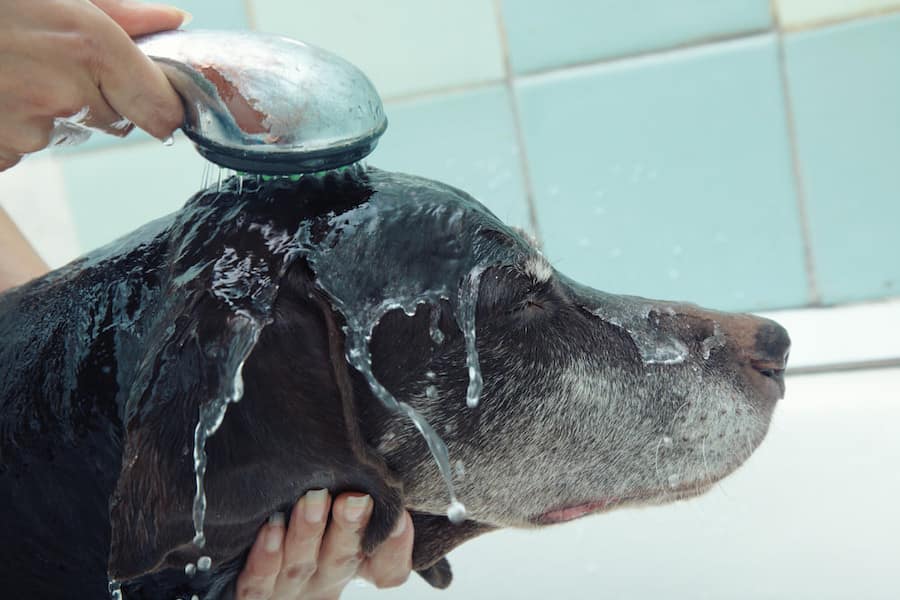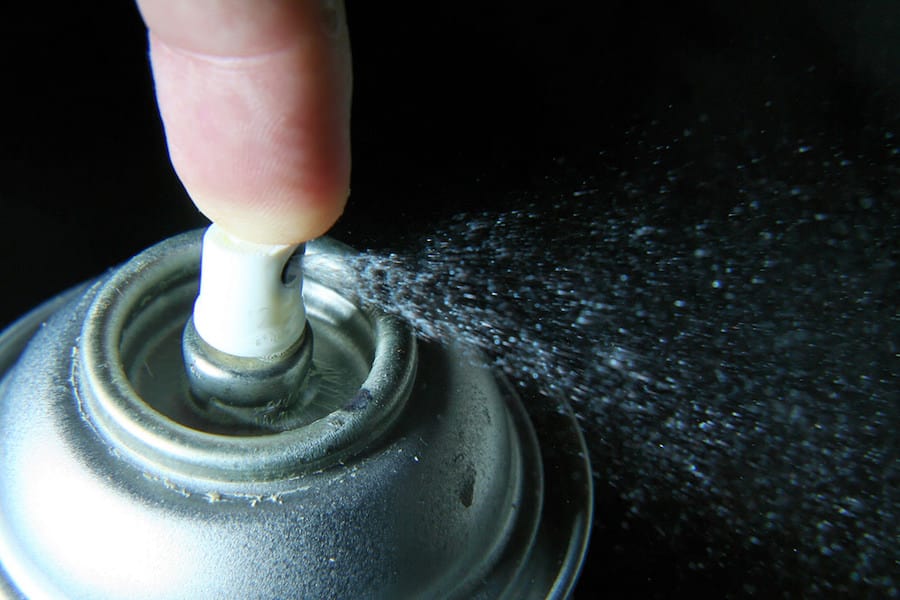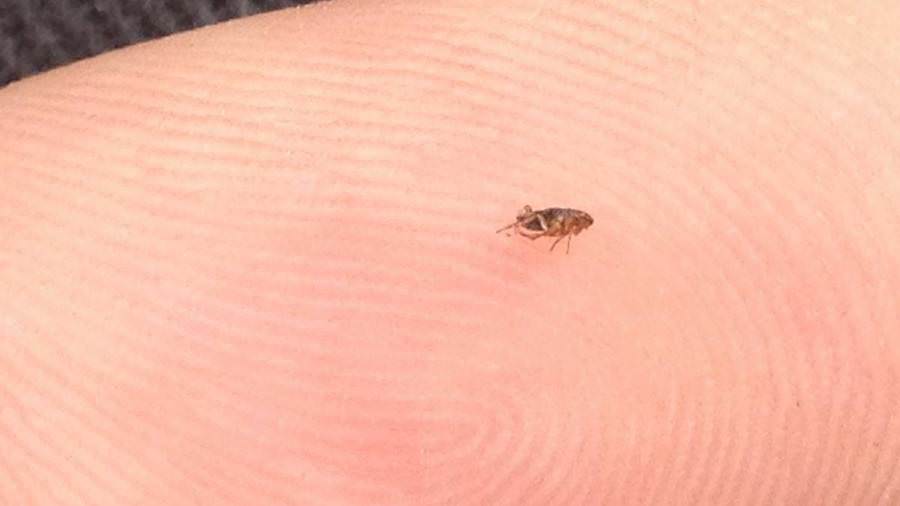How Long Do Fleas Live?
Fleas are minuscule, parasitic insects, which plague the fur of our beloved pets, as well as feral and wild creatures. They are able to leap vast distances compared to their size, as far as 150 times their own length! These incredible jumping abilities mean they make easy work of landing upon and feeding on you or your pet.
We all know that fleas are pretty difficult to get rid of, but once you have a flea problem, you’ll likely want to know how long it’s going to take for them to die out.
In this article, we’ll give you all the details about how long fleas are expected to live on average and the factors involved in determining their lifespan.
What Is The Lifespan Of A Flea?
Fleas are troublesome creatures, which can make us begin to itch at the very thought of them. They can cause havoc for our pets, driving them to scratch and chew themselves raw, while desperately trying in vain to rid themselves of these pests. Unfortunately, fleas are rather hardy. There is no single insecticide which will totally destroy a flea population in one fell swoop.
There are many different kinds of fleas, but they all have a similar lifespan and behaviors. All types of flea are collectively categorized under the scientific order “Siphonaptera”. The most common flea in the US is the cat flea, or Ctenocephalides felix. This flea infests cats, dogs, humans and other stray or wild animals and birds, and is the type we will be focussing on in this article.
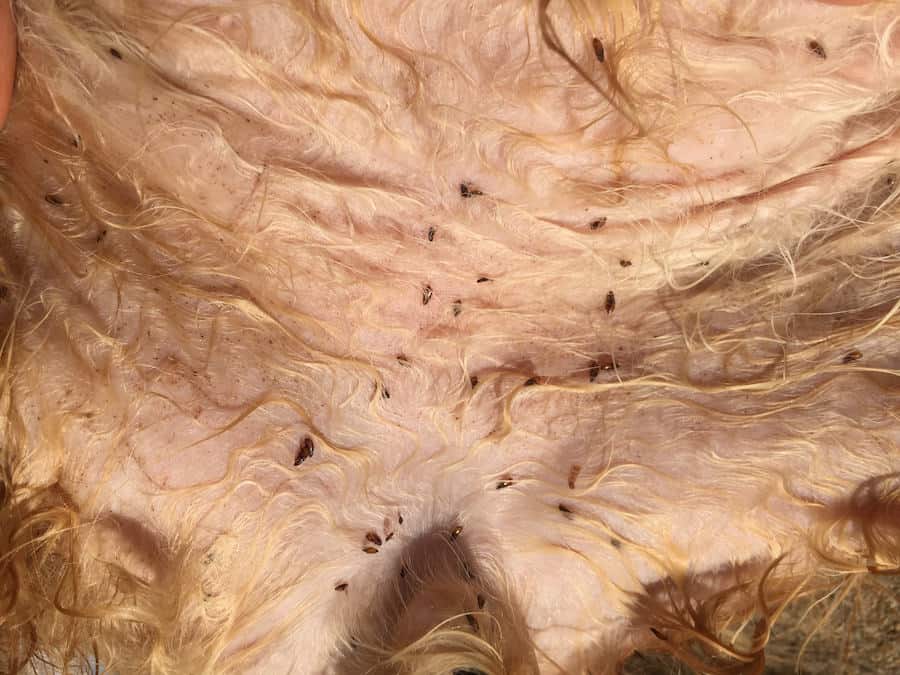
Fleas love to live in warm and moist environments. In fact, this is where they thrive and breed the fastest. As adults, they survive upon blood meals from their hosts, which are most often mammalian species. It is the saliva of the flea, which causes the irritation felt by the victim of their bites. It contains anti-coagulant compounds, which pre-softens the skin, so they can feed more easily on the blood beneath.
Understanding the life of a flea is imperative if you need to get rid of them. Unfortunately, because fleas are so resilient, they are much easier to prevent than to exterminate. Previously just a summer concern, now that most households have indoor heating, fleas are able to survive all year round.
Flea eggs can remain in a state of dormancy for very long periods of time before they hatch. This can be in your yard, carpet or even within your furniture. Once conditions are right, they will hatch and lay in wait for a suitable host.
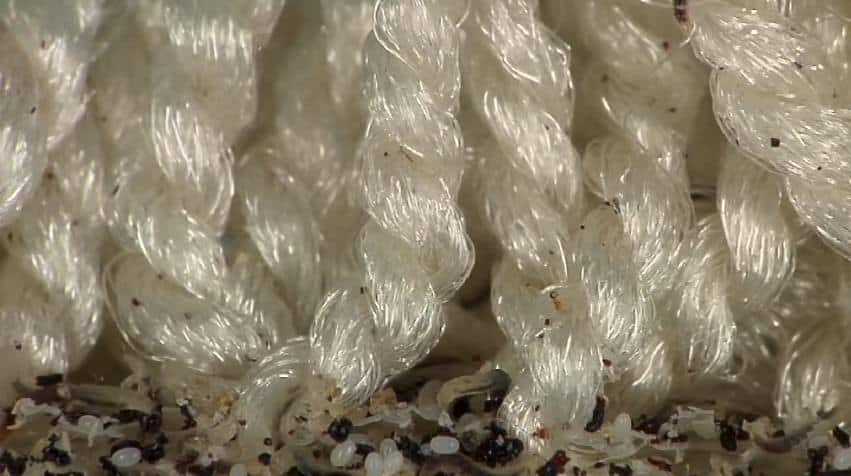
If a flea is undisturbed, in perfect conditions and with access to regular blood feeds – they can live as long as three months.
How Long Can Fleas Live Without Feeding?
Once a young flea has first hatched, they must find a host quickly if they are to survive. Generally, if they do not get a blood meal within a week, they will die of starvation.
Adult fleas can fare a little better without food. If the environment is favorable, they can survive for up to 15 days at 75.2 F and 78% humidity. If the temperature and humidity levels are lower, around 72.5 F/60% humidity – they can live for up to 12.3 days.
The very best environments are those which combine cool temperatures with high humidity. In these circumstances, fleas have been seen to live without food for as long as 40 days! In a clinical experiment, fleas were kept in a controlled environment which featured cool air at 100% humidity. In these simulated and rarely found conditions, the fleas remained alive for 70 days without feeding.
Once a flea has found a suitable host, they will generally begin feeding as soon as they can, sometimes in as little as a minute after landing on the host. They will usually continue to feed in repeated sessions, for around 24 hours. If a flea hasn’t eaten previously, it can almost double its’ body weight and triple the soluble proteins within it during this time. However, if a flea falls off its host and doesn’t feed for 12 hours, it will have lost all the weight and protein it had gained. This tells us that a flea generally needs to feed every 12 hours to stay healthy.
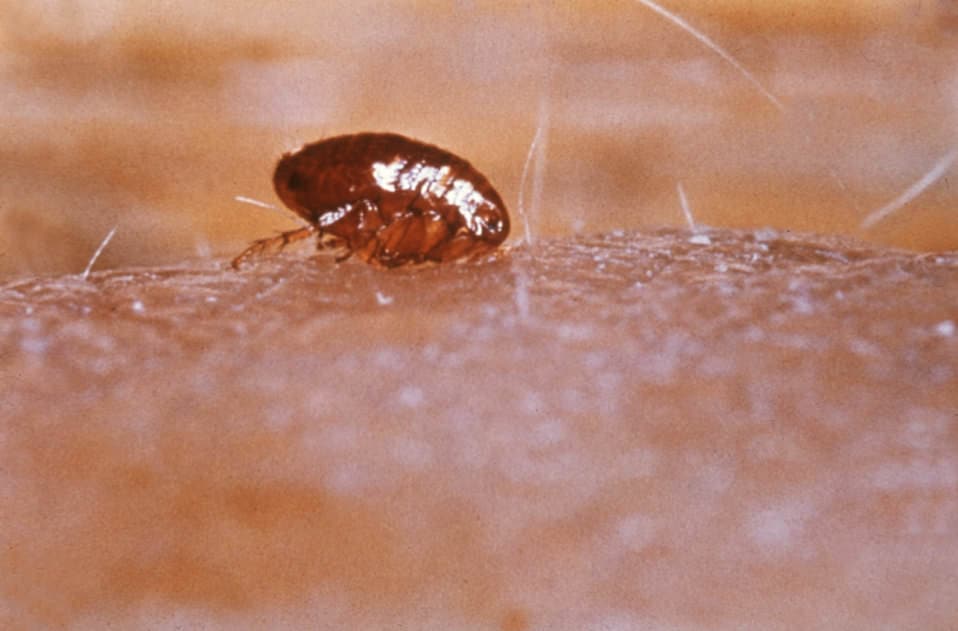
In common household conditions, fleas will usually die after 4 days without a feed from a host. The youngest fleas reach a stage of dependency once they have found a host to feed upon after a few days. This means that they will have adapted to regular feedings and will require constant access to a source of blood until they reach maturity.
A good example of this was seen in a scientific study. Fleas which had never fed before were able to consume blood from a host for a period of five days. They were then removed and starved of food – they all died within 2-4 days. However, when previously unfed fleas were only allowed to feed for 12 hours instead of five full days, they did not reach the state of dependency, and in some cases survived for up to 2 weeks without food, after being removed from the host.
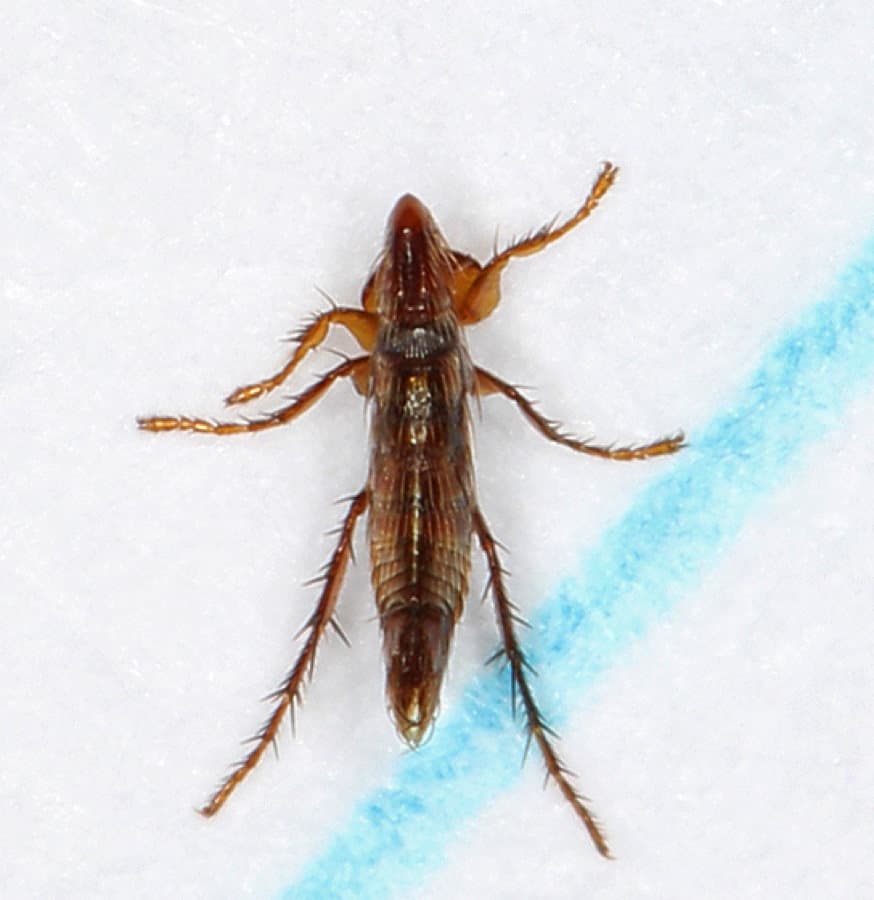
Although fleas can survive without food, they cannot breed. They are an “anautogenous” creature – meaning that they must consume host blood to be able to mate and reproduce.
Therefore, breeding female fleas will need to feed off their host continuously to ensure their metabolic rate is sufficient enough to produce eggs. Such breeding females will often die within 24 hours, if they are removed from their host.
Life Cycle Of A Flea
If we consider the life cycle of a flea in relation to that of other insects, it is not particularly long. The life cycle has 4 stages: egg, larva, pupa and finally adult flea. The entire process can take as little as two weeks, to as long as many months. This variation is due to the environmental conditions in which the flea is living and breeding in.
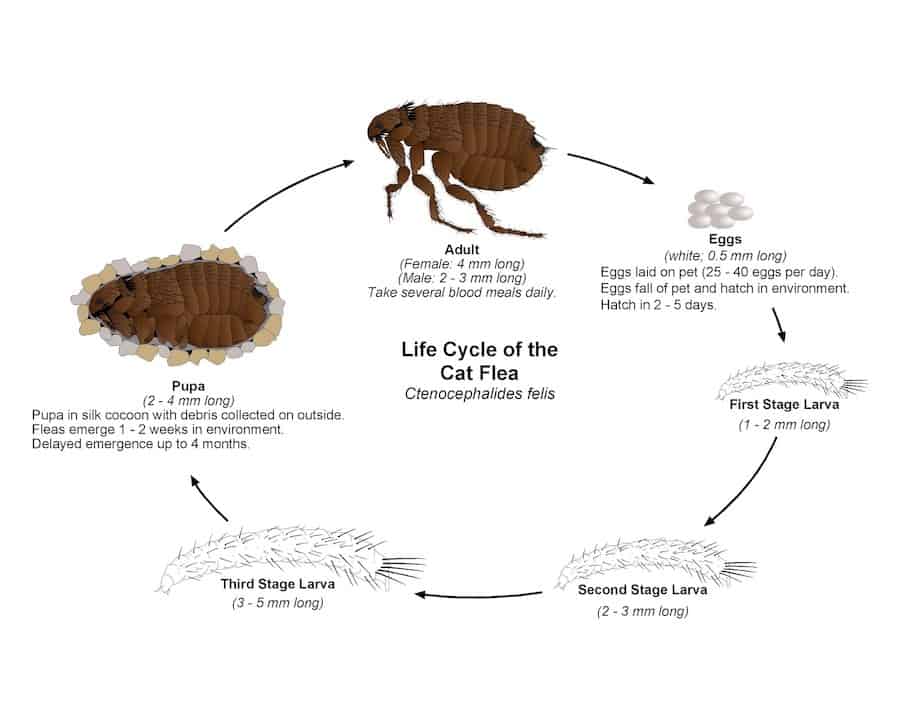
The female fleas lay their eggs while they are latched onto their preferred host. The female herself is attached, however, the eggs are not. This results in the eggs dropping to the floor as the host moves around. These eggs will stay wherever they have landed until they are ready to hatch. If conditions are good, the flea larvae will usually hatch within 2-12 days of being laid by the female.
These larvae look nothing like an adult flea. Incredibly small, they are highly unlikely to be visible to the human eye. They are whitish-cream in color and have no limbs.
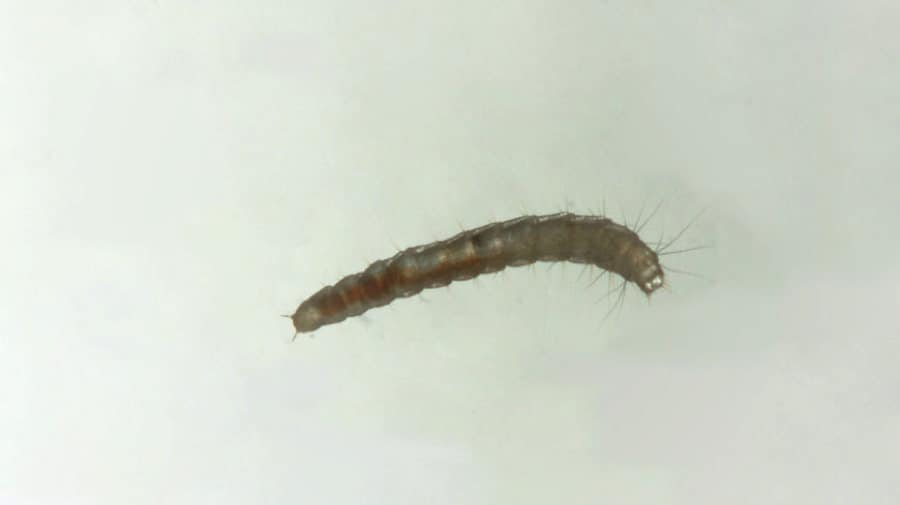
What they do have, though, are very strong mouths. They survive by eating the organic waste such as hair and dead skin, the feces of other fleas, as well as their own sheddings. They tend to hide in household carpets or deep within bedding and furniture. During summertime, the larval stage takes around 4-24 days. It can take as long as 200 days during the cooler months.
A fully grown larva spins itself into a cocoon, in order to enter the pupa stage of the flea life cycle. This stage takes around 5 – 14 days, but may take longer under unsuitable conditions. Once it is ready, the young adult flea will emerge and wait for an unsuspecting host to come past.
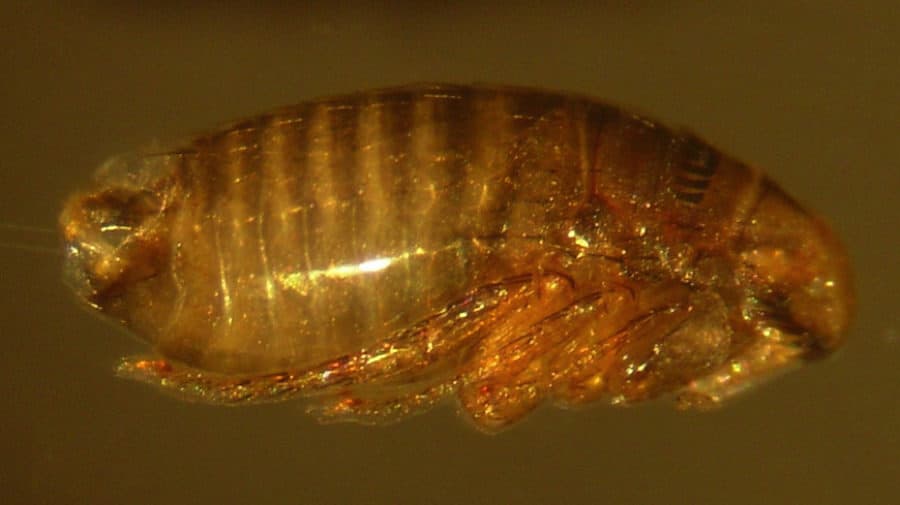
Contrary to popular belief, fleas actually spend the majority of their life cycle on nearby surfaces, rather than on a host. 95% of the flea life cycle is spent in the pre-adult stages.
Summary
As we have discovered, the length of time fleas will live, varies considerably based upon the stage of their life cycle, the surrounding environment and their access to a blood meal.
Even though these irritating parasites can be very tough to eradicate, knowledge is certainly the best weapon. Now that you understand the lifespan and life cycle of these horrible pests – you can tackle any future infestations in the most effective way possible.

